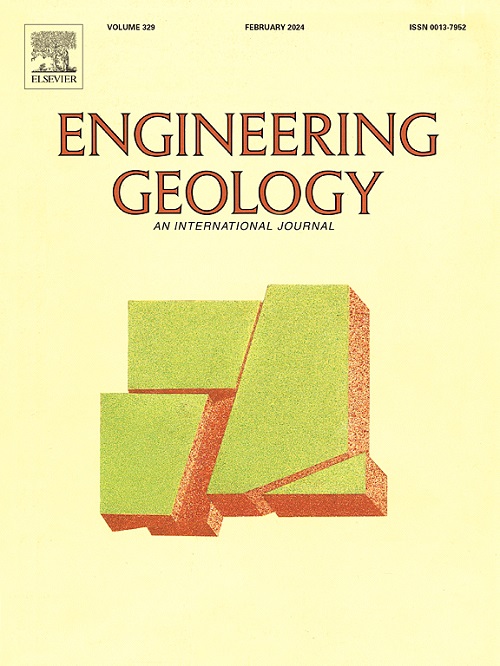Effects of loading paths and initial densities on mechanical response and gradation evolution of calcareous sand
IF 6.9
1区 工程技术
Q1 ENGINEERING, GEOLOGICAL
引用次数: 0
Abstract
Calcareous sand, a distinctive granular material in geotechnical engineering, has garnered significant interest due to its irregular particle shapes, internal porosity, susceptibility to breakage, and critical role in island and offshore construction. Despite its importance, the influence of loading paths on its mechanical behavior and particle breakage remains underexplored. This study addresses this gap through an extensive experimental program, including isotropic consolidation and both drained and undrained triaxial compression tests, systematically varying loading paths and initial densities. The findings demonstrate that the strength and deformation characteristics of calcareous sand are profoundly affected by loading paths, initial densities, and particle breakage. A novel breakage evolution model is proposed, effectively capturing gradation changes under diverse testing conditions. Furthermore, the study quantifies the impacts of these factors on critical mechanical properties, including peak friction angle, dilatancy, secant modulus, and critical state parameters. These results provide a robust theoretical foundation for the development of constitutive models that integrate particle breakage and initial density effects. The insights are essential for optimizing geotechnical designs, enhancing stability, and improving infrastructure reliability in coastal and marine environments, particularly in island and reef development projects.
加载路径和初始密度对钙质砂力学响应及级配演化的影响
钙质砂是岩土工程中一种独特的颗粒材料,由于其不规则的颗粒形状、内部孔隙度、易破碎性以及在岛屿和近海建设中的关键作用,已经引起了人们的极大兴趣。尽管它很重要,但加载路径对其力学行为和颗粒破碎的影响仍未得到充分研究。本研究通过广泛的实验程序解决了这一差距,包括各向同性固结、排水和不排水三轴压缩试验、系统地改变加载路径和初始密度。研究结果表明,加载路径、初始密度和颗粒破碎程度对钙质砂的强度和变形特性有较大影响。提出了一种新的断裂演化模型,能有效地捕捉不同试验条件下的级配变化。此外,研究还量化了这些因素对临界力学性能的影响,包括峰值摩擦角、剪胀率、割线模量和临界状态参数。这些结果为建立综合颗粒破碎和初始密度效应的本构模型提供了坚实的理论基础。这些见解对于优化岩土设计、增强稳定性以及提高沿海和海洋环境(特别是岛屿和珊瑚礁开发项目)中基础设施的可靠性至关重要。
本文章由计算机程序翻译,如有差异,请以英文原文为准。
求助全文
约1分钟内获得全文
求助全文
来源期刊

Engineering Geology
地学-地球科学综合
CiteScore
13.70
自引率
12.20%
发文量
327
审稿时长
5.6 months
期刊介绍:
Engineering Geology, an international interdisciplinary journal, serves as a bridge between earth sciences and engineering, focusing on geological and geotechnical engineering. It welcomes studies with relevance to engineering, environmental concerns, and safety, catering to engineering geologists with backgrounds in geology or civil/mining engineering. Topics include applied geomorphology, structural geology, geophysics, geochemistry, environmental geology, hydrogeology, land use planning, natural hazards, remote sensing, soil and rock mechanics, and applied geotechnical engineering. The journal provides a platform for research at the intersection of geology and engineering disciplines.
 求助内容:
求助内容: 应助结果提醒方式:
应助结果提醒方式:


